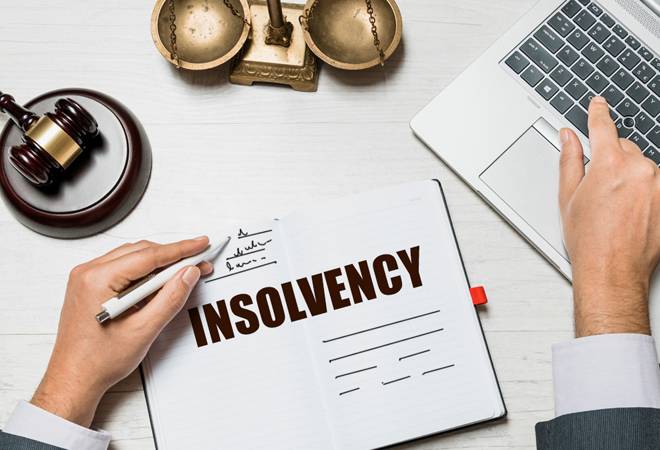Insolvency Practitioner Fundamentals Explained
Insolvency Practitioner Fundamentals Explained
Blog Article
The Ultimate Guide To Insolvency Practitioner
Table of ContentsThe 8-Minute Rule for Insolvency PractitionerRumored Buzz on Insolvency PractitionerThe Greatest Guide To Insolvency PractitionerInsolvency Practitioner Can Be Fun For EveryoneInsolvency Practitioner - QuestionsExamine This Report about Insolvency PractitionerInsolvency Practitioner for Beginners
Insurance policy is kept track of and managed by state insurance departments, and among their main goals is safeguarding insurance policy holders from the danger of a company in monetary distress. When a company gets in a duration of monetary trouble and is not able to fulfill its responsibilities, the insurance commissioner in the company's home state launches a processdictated by the regulations of the statewhereby efforts are made to aid the company restore its economic ground.If it is established that the company can not be refurbished, the business is stated financially troubled, and the commissioner will ask the state court to order the liquidation of the firm. The insurance commissioner, either appointed by the governor or chosen, heads the state insurance coverage department and displays and controls insurance activity within the state.
[Back] By acquiring control of a company, the commissioner (or the insurance policy division) is, by regulation, the rehabilitator or liquidator of the business. In this capability, the commissioner or department takes control of the firm's operations. Instead of do so directly, the commissioner may retain an unique replacement receiver to oversee the company's activities.
An Unbiased View of Insolvency Practitioner
The receiver oversees an audit of the firm's properties and obligations and provides the estate of the company. In doing so, the receiver seeks to maximize the business's possessions, move them to money, and after that distribute that cash money to creditors having legitimate cases against the insurance provider based on settlement concerns specified by state legislation (in all states, policyholders are top priority plaintiffs whose claims are paid before those of basic financial institutions).
All insurance policy firms (with restricted exceptions) licensed to sell life or medical insurance or annuities in a state must be participants of that state's guaranty association. The guaranty organization accepts the commissioner and the receiver in pre-liquidation preparation. When the liquidation is gotten, the warranty organization supplies coverage to the business's policyholders that are state homeowners (as much as the levels specified by state lawssee listed below; any benefit quantities above the warranty asociation advantage levels become insurance claims against the business's remaining possessions).
The above insurance coverage degrees apply individually for each bankrupt insurer. [Back] When an insurance company falls short and there is a shortfall of funds required to meet the commitments to policyholders, state guaranty organizations are turned on. Warranty associations have 2 primary resources of funding when supplying protection to insurance holders. Initially, warranty associations have subrogation rights to a proportional share of the properties staying in the stopped working insurance provider.
Insolvency Practitioner Fundamentals Explained

NOLHGA develops a job pressure of representative warranty organizations to collaborate with the insurance commissioner to create a strategy to protect insurance holders. For additional information on NOLHGA's function while doing so, see "What Is NOLHGA?" and "The Safety Net at Work." [Back]
You are below: Bankruptcy is when a company or individual can not pay financial debts when they are due. There are numerous alternatives offered to a financially troubled company or person: ASIC regulates firms, it does not take care of individual insolvency treatments. To learn more regarding insolvency and personal bankruptcy contracts, visit the Australian Financial Security Authority website.
Top Guidelines Of Insolvency Practitioner
Anticipating protection by assisting you select the ideal consumers and the right markets to prevent uncollectable loan to begin with, many thanks to severe financial evaluation - Insolvency Practitioner. Comprehensive market intelligence, offering you with 360-degree exposure on business sectors and putting in jeopardy troubles. It would certainly be a simplification to believe a trade credit insurance begins and finishes with premiums and pay-outs
This can take place for a number of factors, including inadequate financial management, unforeseen expenses, or an adjustment in the market. If a business is insolvent, it might be required to shut down or liquidate assets to pay financial institutions. This can have a significant influence on the business, staff members, and shareholders.
It can cause task losses, possession sales, and also bankruptcy. It is important to recognize how business bankruptcy works and how it can affect your company. Why does a business get in right into insolvency? There are a variety of reasons that a business might enter right into bankruptcy. The most common factor is that the business is incapable to pay its debts as they fall due.
Insolvency Practitioner for Beginners
Various other factors for bankruptcy consist of scams, mismanagement, and unanticipated expenses. When a company becomes insolvent, its assets are utilized to pay off its debts. This can have a major influence on the business, as it may no much longer have the ability to proceed running. Your Domain Name Bankruptcy can additionally bring about work losses and the closure of businesses.
The firm may be forced to offer properties, lay off staff or also shut down. Creditors may be left out of pocket and the business's shareholders may see their investment disappear.
This can happen for a variety of factors, including inadequate economic administration, unexpected costs, or a modification in the marketplace. If a firm is bankrupt, it might be forced to shut down or market off possessions to pay lenders. This can have a major effect on business, workers, and investors.
The Ultimate Guide To Insolvency Practitioner
Why does a firm get in right into insolvency? There are a number of factors why a firm may get in into insolvency.
Various other factors for bankruptcy include scams, mismanagement, and unexpected prices. Insolvency Practitioner. When a firm comes to be insolvent, its properties are utilized to settle its financial debts. This can have a significant effect on the service, as it might no more have the ability to continue operating. Insolvency can likewise lead to task losses and the closure of companies.
The Ultimate Guide To Insolvency Practitioner

Report this page